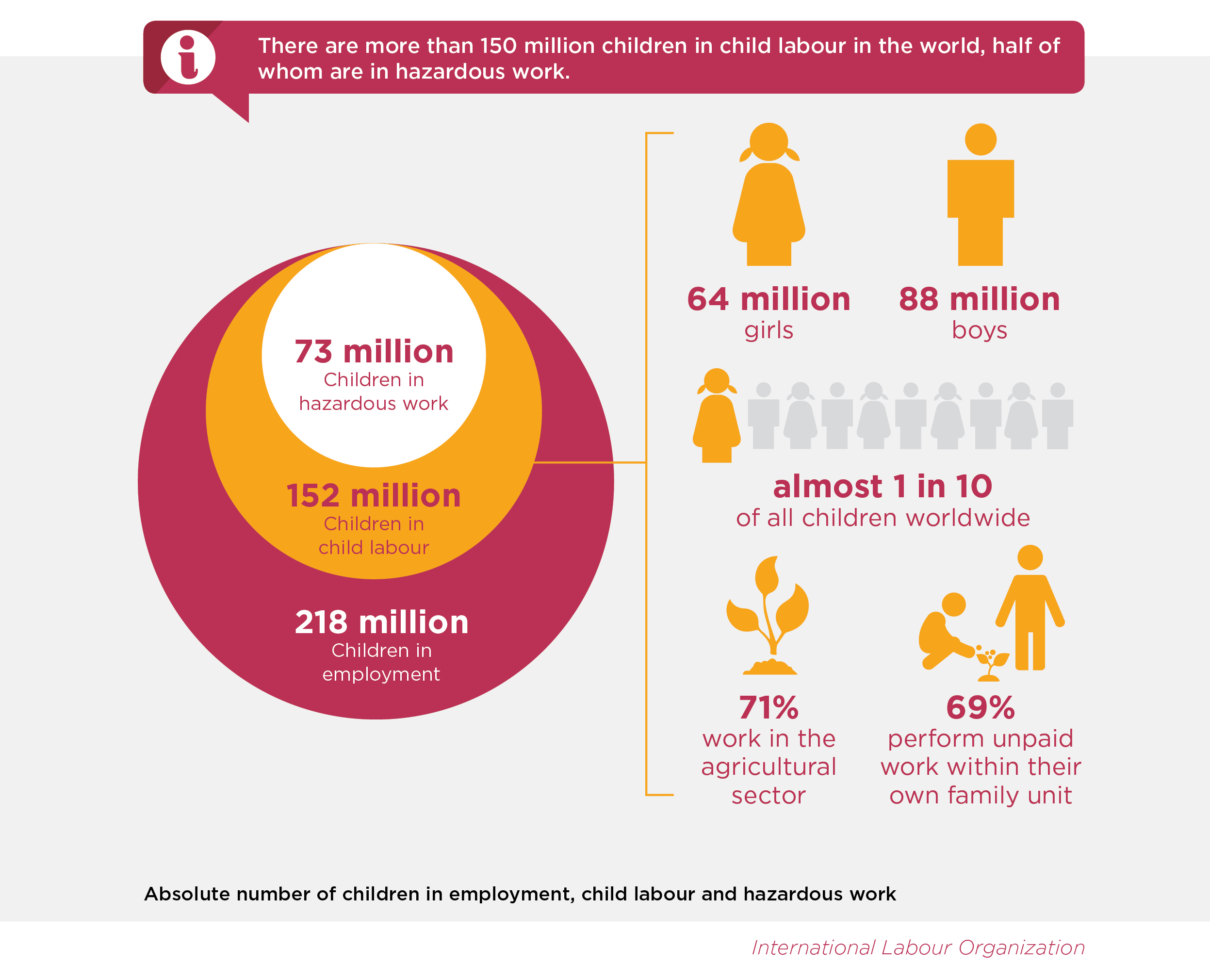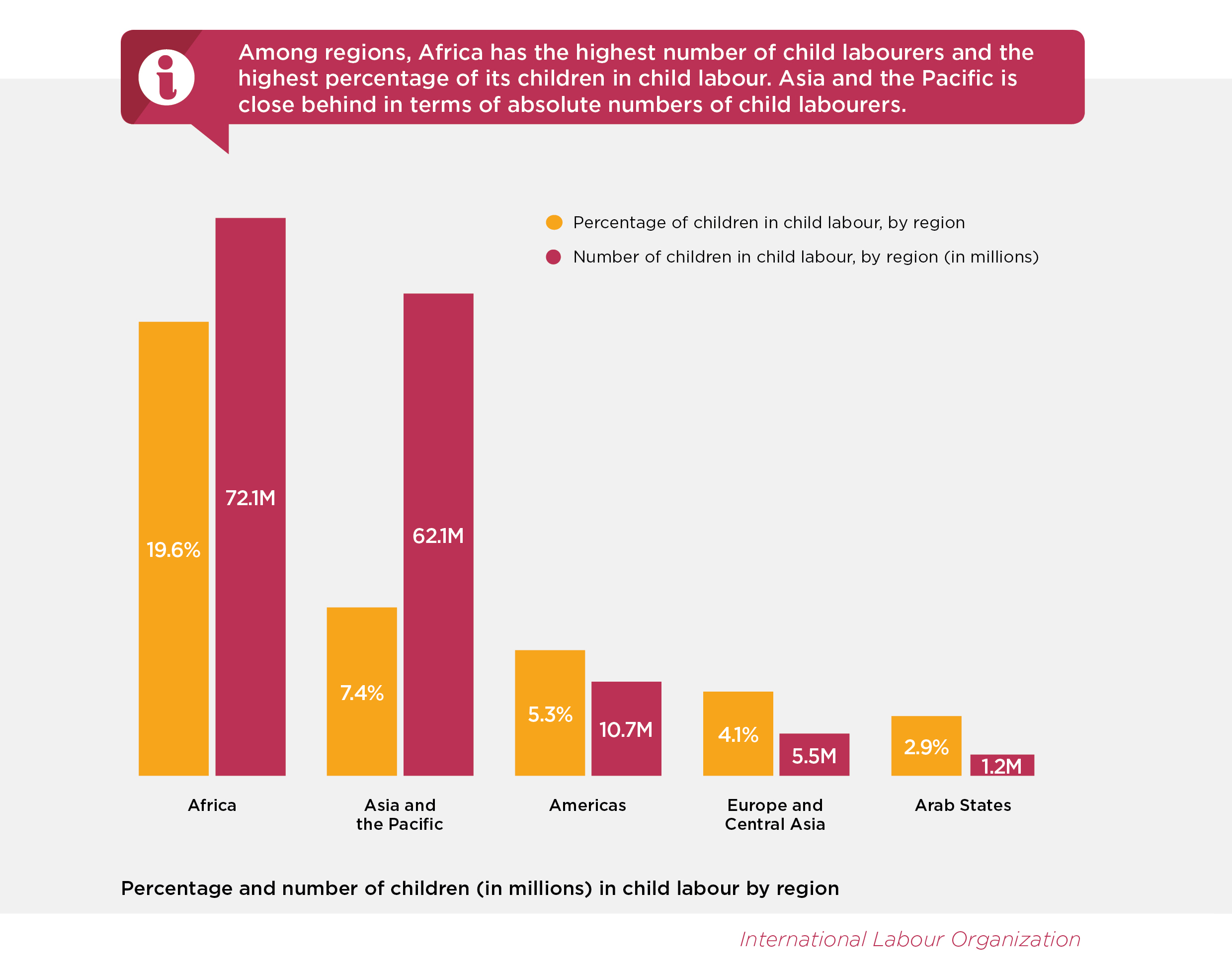Held annually on 12 June, the World Day Against Child Labour was first launched in 2002 by the International Labour Organization or ILO to raise awareness and activism to prevent child labour. It was spurred by ratifications on the minimum age for employment and the worst forms of child labour. The day is intended to foster the worldwide movement against child labour and spread awareness about the harmful mental and physical problems faced by children forced into child labour, all over the world.
The day was first established in 2002 by the ILO to draw attention to the issue of child labour and to revise and revisit strategies to eliminate child labour. According to ILO’s data, hundreds of millions of girls and boys worldwide are involved in work that deprives them of receiving adequate education, health, leisure and basic freedoms, violating this way their rights. Of these children, more than half are exposed to the worst forms of child labour which include work in hazardous environments, slavery, other forms of forced labour, illicit activities such as drug trafficking and prostitution, as well as involvement in armed conflict. World Day Against Child Labour is important because we must pay attention to the problem of child labour and find ways to eradicate it.
Not all work done by children should be classified as child labour that is to be targeted for elimination. Children’s or adolescents’ participation in work that does not affect their health and personal development or interfere with their schooling, is generally regarded as being something positive. This includes activities such as helping their parents around the home, assisting in a family business or earning pocket money outside school hours and during school holidays. These kinds of activities contribute to children’s development and the welfare of their families; they provide them with skills and experience, and help to prepare them to be productive members of society during their adult life.
Today, throughout the world, around 218 million children work, many full-time. They do not go to school and have little or no time to play. Many do not receive proper nutrition or care. They are denied the chance to be children. More than half of them are exposed to the worst forms of child labour such as work in hazardous environments, slavery, other forms of forced labour, illicit activities including drug trafficking and prostitution, as well as involvement in armed conflict.
Child labour to be eliminated is a subset of children in employment. It includes all unconditional worst forms of child labour, such as slavery or practices similar to slavery, the use of a child for prostitution or for illicit activities; work done by children under the minimum legal age for that type of work, as defined by national legislation under international standards. The worst forms of child labour involve children being enslaved, separated from their families, exposed to serious hazards and illnesses and/or left to fend for themselves on the streets of large cities – often at a very early age. Whether or not particular forms of work can be called child labour depends on the child’s age, the type and hours of work performed, the conditions under which it is performed and the objectives pursued by individual countries. The answer varies from country to country, as well as among sectors within countries.
At the beginning of 2020, 1 in 10 children aged 5 and over were involved in child labour worldwide – equating to an estimated 160 million children, or 63 million girls and 97 million boys. Globally, significant progress has been made in reducing child labour in the past two decades according to a ILO and UNICEF report in 2021. The number of children in child labour declined by 85.5 million between 2000 and 2020, from 16% to 9.6%. Only 26.4% of children worldwide receive social protection cash benefits. At the global level, national expenditure on social protection for children amounts to only 1.1% of the GDP. In Africa, the region with the largest share of children in the population, the highest prevalence of child labour and the greatest need for social protection, an equivalent of 0.4% of GDP is spent on social protection for children. It is estimated that without mitigation strategies, the number of children in child labour could rise by 8.9 million by the end of 2022, due to higher poverty and increased vulnerability.
Child labour is a global issue that affects millions of children worldwide. It is a violation of children’s rights and can have long-term negative effects on their physical and mental health, education, and prospects. While progress has been made in recent years to reduce child labour, there is still much work to be done. The International Day against Child Labour is a day when everyone, including governments, businesses, and individuals remember that they have a role to play in ending child labour and ensuring that every child has the opportunity to grow up safe, healthy, and free.




